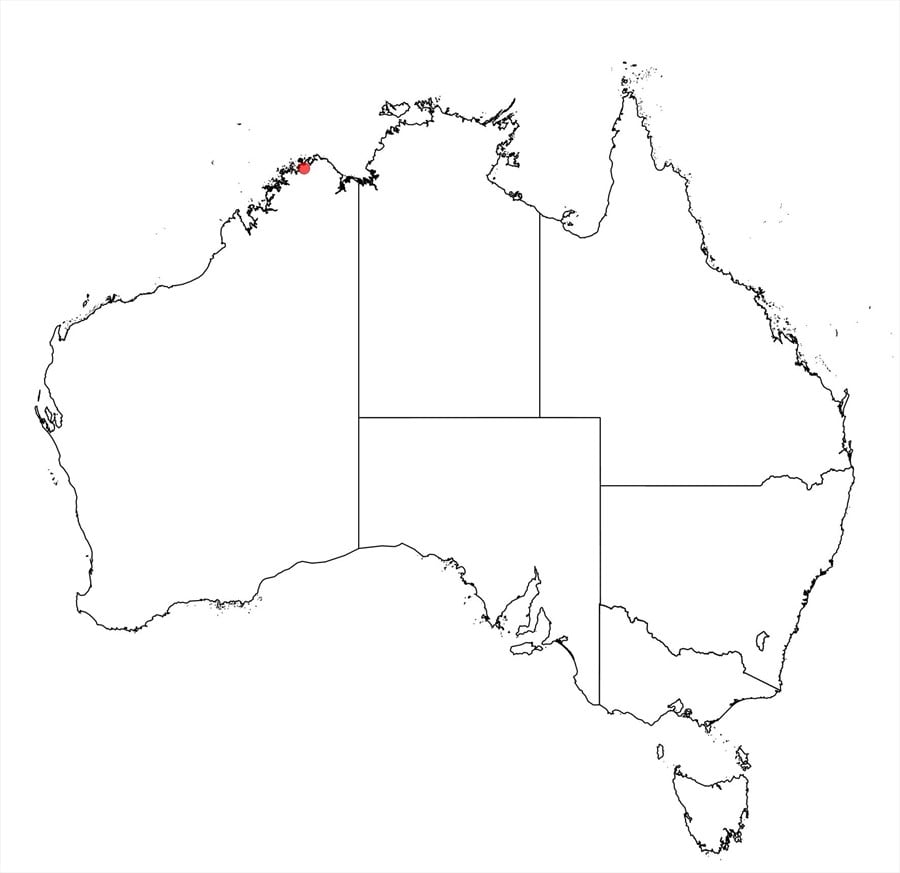Acacia willingii Lewington & Maslin
WATTLE
Acacias of Australia
Common Name
Willing’s Wattle
Family
Fabaceae
Distribution
Occurs in Kimberley region, W.A., where seemingly rare and restricted to Wade Ck area.
Description
Wispy shrub 3–7 m high, branches virgate to sub-pendulous. Branchlets densely white-tomentose. Stipules persistent, setaceous, 3–4 mm long. Phyllodes crowded, ascending to erect, narrowly oblong, (0.6–) 0.8–2.7 (–3) cm long, 1.3–2.3 mm wide, mucronate to sub-setose by a delicate, short point 0.5 mm long, appressed-hairy; nerves numerous, closely parallel, rarely anastomosing, obscure with ±central one slightly pronounced; gland 2–4 mm above pulvinus. Inflorescences simple, peduncles (3–) 4–7 mm long, densely white-tomentose; spikes 15–35 mm long, dense, light golden. Flowers 5-merous; sepals almost free, short-tomentose (as are petals). Pods narrowly oblong, flat but prominently rounded over seeds, 3.5–8 cm long, (5–) 6–7.5 mm wide, firmly chartaceous to thinly coriaceous, mid-brown, densely hairy, very obscurely obliquely nerved. Seeds oblique, oblong, depressed at centre, 4–4.5 mm long, sub-shiny, dark brown to black, areole dull; aril terminal.
Habitat
Grows in skeletal soils in crevices on horizontal sandstone terraces; associated with Hummock Grassland.
Specimens
W.A.: Wade Ck area [precise localities withheld for conservation reasons], C.A.Gardner 1534/1034 (PERTH: see M.A.Lewington and B.R.Maslin, op. cit. 74, for discussion of Gardner collecting numbers) and 6 Aug. 2006, T.Willing (PERTH).
Notes
Most closely related to A. kelleri which differs most obviously in its pods which are submoniliform, narrower, dark red-brown, mostly glabrous, longitudinally striate and have longitudinally orientated seeds. In the absence of pods the species can be difficult to separate but A. kelleri has phyllodes with nerves more pronounced, apical points longer and more distinctly setose, and generally longer peduncles; see M.A.Lewington and B.R.Maslin, Nuytsia 19(1): 73–74 (2009), for discussion. Also allied to A. chrysochaeta which differs in its usually longer phyllodes and peduncles, and especially in having broader pods which, like the flowers, possess golden hairs when young, and A. dacrydioides which is readily distinguished by its subterete phyllodes.
This species was referred to as ‘a possible new taxon with affinity to A. kelleri’ by NSW in Fl. Australia 11B: 204 (2001).
FOA Reference
Flora of Australia Project
Author
J.Reid, B.R.Maslin
This identification key and fact sheets are available as a mobile application:
URL: https://apps.lucidcentral.org/wattle/
© Copyright 2018. All rights reserved.






